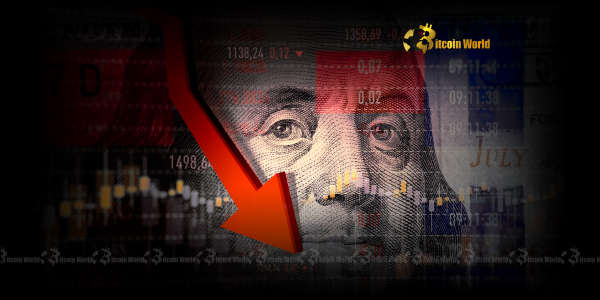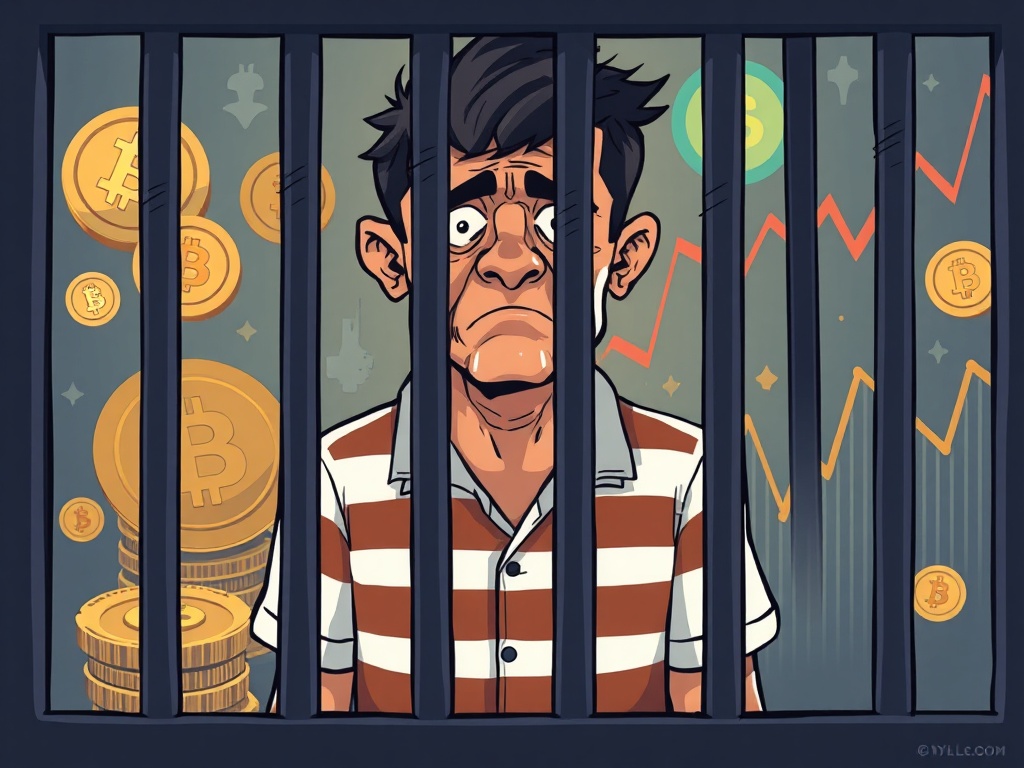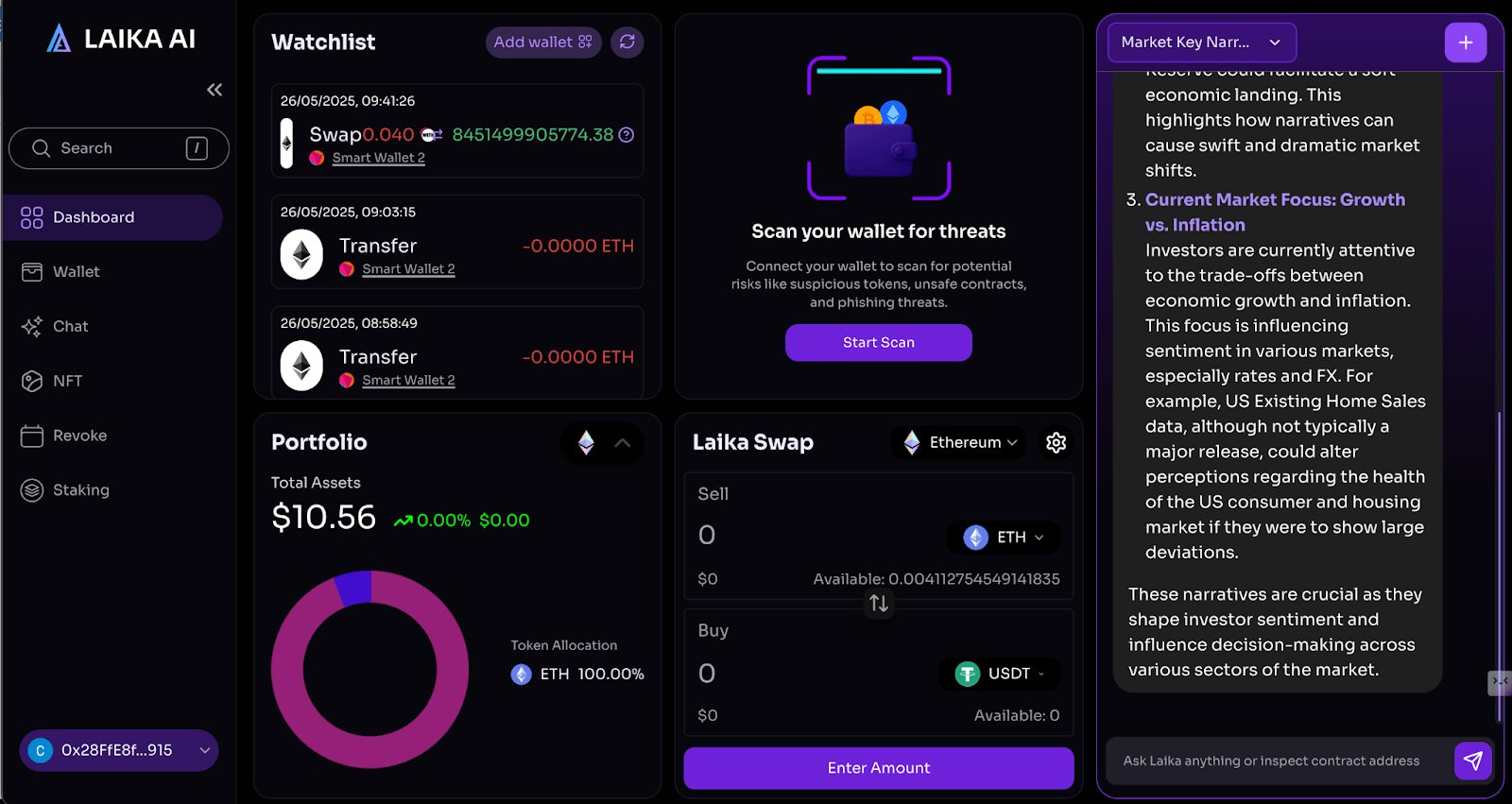BitcoinWorld

US Dollar Weakness: Unveiling the Profound Impact on the US Economy
In the dynamic world of finance, where every ripple can turn into a wave, the recent trends indicating US Dollar Weakness have captured significant attention. For those deeply invested in cryptocurrencies and other alternative assets, understanding the nuances of traditional financial shifts, especially concerning the world’s reserve currency, is paramount. A weaker dollar can reshape investment strategies, influence commodity prices, and even alter the landscape for digital assets. Let us delve into what this means for the United States and the broader global economy.
Understanding Dollar Depreciation: What’s Happening?
To truly grasp the implications of a weakening dollar, it is essential to first understand what Dollar Depreciation entails. Simply put, it means that the United States dollar loses value relative to other major currencies. When you hear that the dollar is ‘weak,’ it means that it takes fewer units of a foreign currency to buy one US dollar, or conversely, it takes more US dollars to buy one unit of a foreign currency. This shift is not a random occurrence; it is often driven by a complex interplay of economic factors and policy decisions.
Several key factors can contribute to Dollar Depreciation:
- Interest Rate Differentials: If interest rates in other countries rise relative to those in the U.S., foreign investors may move their capital to those countries seeking higher returns, thereby increasing demand for foreign currencies and decreasing demand for the dollar.
- Trade Deficits: A persistent trade deficit, where a country imports more goods and services than it exports, can lead to a weaker currency. This is because the country needs to sell its currency to buy foreign goods, increasing the supply of its currency in the foreign exchange market.
- Economic Performance: Perceptions of a country’s economic health play a significant role. If the U.S. economy is perceived to be underperforming compared to other major economies, investors might lose confidence in the dollar.
- Monetary Policy: Quantitative easing (QE) or other expansionary monetary policies, which increase the money supply, can dilute the value of the currency. Conversely, quantitative tightening or rate hikes can strengthen it.
- Geopolitical Events: Global political instability, trade wars, or major international conflicts can lead investors to seek safer havens, which might sometimes include other major currencies or assets like gold, rather than the dollar.
US Economy Impact: A Double-Edged Sword?
The US Economy Impact of a weaker dollar is multifaceted, presenting both opportunities and challenges. It is rarely a clear-cut scenario of ‘good’ or ‘bad,’ but rather a dynamic situation with winners and losers across different sectors.
Potential Benefits:
- Boost to Exports: One of the most frequently cited benefits of a weaker dollar is that it makes U.S. exports cheaper and more competitive on the global market. Foreign buyers can purchase more American goods and services with the same amount of their currency, potentially leading to increased demand for ‘Made in USA’ products. This can stimulate domestic production, create jobs, and improve the U.S. trade balance.
- Support for Multinational Corporations: U.S. multinational companies that earn a significant portion of their revenue overseas often see their foreign earnings increase when converted back into a weaker dollar. This can boost their reported profits and stock valuations.
- Increased Tourism: For international travelers, a weaker dollar makes visiting the United States more affordable. This can lead to an increase in tourism, benefiting industries like hospitality, retail, and entertainment.
Significant Challenges:
- More Expensive Imports: Conversely, a weaker dollar makes imports more expensive for American consumers and businesses. Products ranging from electronics and clothing to raw materials become pricier, which can reduce consumer purchasing power and increase input costs for domestic industries.
- Inflationary Pressures: This is a major concern. As imports become more expensive, it can contribute to domestic inflation. We will delve deeper into this shortly.
- Reduced Purchasing Power Abroad: For American tourists or businesses operating overseas, a weaker dollar means their money buys less in foreign countries, making international travel and foreign investments more costly.
- Capital Outflows: If foreign investors perceive a weaker dollar as a sign of economic instability or lower returns, they might pull their investments out of U.S. assets, leading to capital outflows and potentially higher borrowing costs for the U.S. government and corporations.
To summarize the complex nature of the US Economy Impact:
| Aspect | Benefit of Weak Dollar | Challenge of Weak Dollar |
|---|---|---|
| Exports | More competitive, boosts demand for U.S. goods and services | |
| Imports | More expensive, higher consumer costs, increased input costs for businesses | |
| Corporate Earnings (MNCs) | Higher foreign earnings when converted to USD, boosting profits | Increased cost of imported inputs and raw materials |
| Tourism | Attracts more foreign visitors to the U.S. | More expensive for Americans to travel abroad |
| Debt | Eases repayment burden for USD-denominated foreign debt | Potentially increases cost of servicing foreign-held U.S. debt if investors demand higher yields |
Are Inflationary Pressures a Real Threat?
One of the most significant concerns stemming from US Dollar Weakness is the potential for heightened Inflationary Pressures. Inflation erodes purchasing power, making everyday goods and services more expensive for consumers. A weaker dollar can fuel inflation through several channels:
- Higher Import Costs: As previously mentioned, when the dollar weakens, imported goods become more expensive. If U.S. businesses rely heavily on imported components or finished products, these increased costs are often passed on to consumers in the form of higher prices. This is a direct pass-through effect.
- Commodity Price Increases: Many global commodities, such as oil, gold, and industrial metals, are priced in U.S. dollars. When the dollar weakens, it effectively makes these commodities cheaper for holders of other currencies. This increased demand can drive up their dollar-denominated prices. For example, a weaker dollar means it takes more dollars to buy a barrel of oil, leading to higher gas prices for consumers.
- Reduced Competition: With imports becoming more expensive, domestic producers might face less price competition from foreign goods. This can give them more leeway to raise their own prices without fear of being undercut, contributing to overall inflation.
- Wage-Price Spiral Risk: If consumers face rising prices, they may demand higher wages to maintain their purchasing power. If businesses grant these higher wages, they might in turn raise prices further to cover increased labor costs, potentially creating a self-perpetuating wage-price spiral.
The Federal Reserve closely monitors inflation, and persistent Inflationary Pressures resulting from a weaker dollar could compel the central bank to tighten monetary policy, potentially through interest rate hikes. Such actions could then influence economic growth and financial market stability.
How Does Dollar Weakness Resonate Across Global Financial Markets?
The dollar’s role as the world’s primary reserve currency means that its fluctuations have far-reaching effects across Global Financial Markets. Every major asset class, from equities and bonds to commodities and even cryptocurrencies, feels the ripple effect.
Impact on Specific Market Segments:
- Commodities: As noted, dollar-denominated commodities like oil and gold tend to become more expensive when the dollar weakens. This can be a boon for commodity-exporting nations but a challenge for importers. Gold, often seen as a hedge against inflation and currency debasement, typically rallies during periods of dollar weakness.
- Emerging Markets: Many emerging market economies have significant portions of their debt denominated in U.S. dollars. A weaker dollar makes it easier for these countries to service their dollar-denominated debt, as it takes fewer units of their local currency to buy the dollars needed for repayment. This can ease financial stress and potentially attract capital flows to these markets. Conversely, a strong dollar can create debt crises in these regions.
- International Trade and Investment: A weaker dollar can shift global trade dynamics, making U.S. goods more attractive and potentially leading to increased foreign direct investment into the U.S. as assets become relatively cheaper for foreign buyers.
- Cryptocurrencies: While not directly tied to traditional fiat currencies in the same way, the crypto market is not immune to macro trends. A weaker dollar can have several indirect implications for cryptocurrencies like Bitcoin and Ethereum. Some investors might view Bitcoin as a ‘digital gold’ or an alternative store of value, especially in an environment of perceived fiat currency debasement and rising inflation. If confidence in the dollar wanes, some capital might flow into crypto as a hedge. Conversely, if a weaker dollar leads to aggressive monetary tightening by the Fed to combat inflation, this could create a risk-off environment that negatively impacts risk assets, including cryptocurrencies. The narrative around crypto as an inflation hedge often gains traction during periods of dollar weakness and rising inflation concerns.
- Bond Markets: A weaker dollar can make U.S. bonds less attractive to foreign investors if the currency depreciation outweighs the yield. This could lead to higher interest rates on U.S. debt, as the government needs to offer higher yields to attract buyers.
Navigating the Landscape: Actionable Insights
Given the complex implications of US Dollar Weakness, what can individuals, businesses, and investors do to navigate this evolving financial landscape?
For Businesses:
- Diversify Supply Chains: Consider sourcing inputs from domestic suppliers or countries whose currencies are also weakening against the dollar to mitigate import cost increases.
- Hedge Currency Exposure: Businesses with significant international transactions can use financial instruments like forward contracts or options to hedge against adverse currency movements.
- Focus on Exports: If applicable, capitalize on the increased competitiveness of U.S. exports by expanding international sales efforts.
- Strategic Pricing: Carefully evaluate pricing strategies to balance competitiveness with maintaining profit margins in the face of rising import costs.
For Investors:
- Diversify Portfolios: Consider diversifying investments across different asset classes and geographies. Exposure to international equities, particularly in countries with strengthening currencies or strong economic outlooks, might be beneficial.
- Commodity Exposure: Assets like gold, silver, and other commodities often perform well during periods of dollar weakness and inflation. Investors might consider allocating a portion of their portfolio to these assets.
- Real Estate: Real estate can act as an inflation hedge, as property values and rental income often rise with inflation.
- Evaluate Crypto’s Role: For those interested in digital assets, consider the narrative of Bitcoin as an inflation hedge or a store of value. While volatile, its decentralized nature is sometimes seen as a safeguard against traditional currency debasement. However, always exercise caution and conduct thorough research due to crypto’s inherent risks.
- Review Fixed Income: Be cautious with long-term fixed-income investments, as their real returns can be eroded by inflation. Consider inflation-protected securities (TIPS).
For Consumers:
- Budgeting for Higher Costs: Be prepared for potential increases in the cost of imported goods, electronics, and gasoline. Adjust household budgets accordingly.
- Consider Domestic Products: Opting for domestically produced goods can help support the local economy and potentially mitigate the impact of higher import prices.
- Travel Planning: If planning international travel, be aware that it might become more expensive. Domestic travel could offer a more cost-effective alternative.
- Savings and Investments: Re-evaluate savings strategies to ensure that purchasing power is not significantly eroded by inflation. Consider investment options that offer a hedge against inflation.
Conclusion: Navigating the Shifting Sands of Currency Dynamics
The US Dollar Weakness is a complex economic phenomenon with profound implications for the United States and the broader Global Financial Markets. While it offers potential benefits like boosted exports and increased tourism, it also poses significant challenges, primarily through increased import costs and the specter of heightened Inflationary Pressures. Understanding the forces driving Dollar Depreciation and its multifaceted US Economy Impact is crucial for businesses, investors, and consumers alike.
As the world continues to grapple with evolving macroeconomic conditions, central bank policies, and geopolitical shifts, the dollar’s trajectory will remain a critical determinant of economic health and market sentiment. Adapting to these currency dynamics through informed decisions and strategic planning is key to navigating the opportunities and risks that arise from a weaker dollar environment.
To learn more about the latest Forex market trends, explore our article on key developments shaping the US Dollar and global economy.
This post US Dollar Weakness: Unveiling the Profound Impact on the US Economy first appeared on BitcoinWorld and is written by Editorial Team





